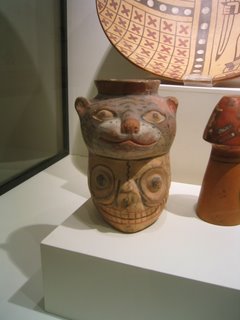Chiclayo (day 22)
We went to the local market in Chiclayo on Sunday morning - this is a HUGE market with a large section of witchcraft herbs, potions, and animal products (shark teeth, etc.). We also saw a couple of shrunken heads!

That day was also the graduation ceremony for (we think) the local university, so there was a large parade and tons of people on the streets, especially along Av. Balta.
We wanted to have lunch at Pueblo Viejo, a restaurant that had been recommended, but when we arrived at its location we found that it had been turned into a cheesy steak house. So, we headed to Romana, another restaurant serving local cuisine. The arroz con pato, a typical northern dish with cilantro-flavored rice and a piece of duck, was ok but nothing special.
We took a combi to Ferrenafe, where there is a fairly new museum (2001) of Sican artifacts (not to be confused with "Sipan"). The museum is on the outskirts of the town, so we had to hire a mototaxi (s/1.50) for the remainder of the trip after the combi dropped us off in town. The museum contains a good collection of gold artifacts, including masks, headdressses and earpieces.

We went back to Chiclayo via collectivo (passenger sedan) (s/2) and tried a small piece of "King Kong", a local treat made of two crackers separated by a huge amount of soft, gooey filling. The traditional King Kong contains manjar blanco and pineapple filling, but there are a number of varieties available. (Manjar blanco is similar to caramel.)
We had a very disappointing pollo a la brasa for dinner at Hebron, a large restaurant with a McDonalds feel to it. The chicken had little flavor and the service was pretty bad. On the bright side they do have OK coffee (not instant).
There are loads of overnight buses between Lima and Chiclayo, taking aprroximately 11 hours. We caught a Cruz del Sur "Cruzero" bus at 9:30 pm. My favorite sign on the Cruz del Sur buses is in the bathroom:

Overall opinions:
Romano restaurant, Chiclayo: 7. Decent selection and good service.
Museo Sican, Ferrenafe: 8. Small but good collection. Cost: s/8.50
Hebron Restaurant, Chiclayo: 5. Clean, but mediocre food and service. Dinner for 2: s/17.
Cruz del Sur "Cruzero" bus Chiclayo to Lima: 10. Cost: s/70.
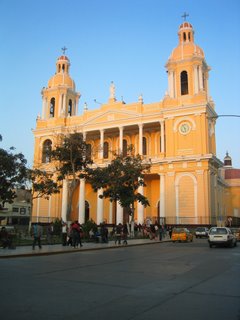

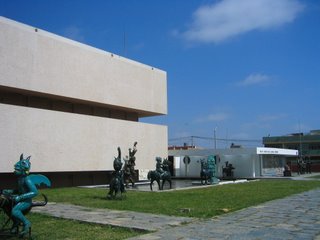


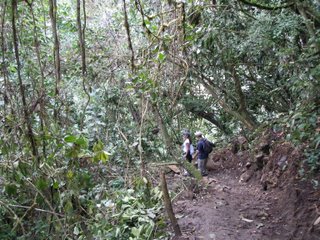
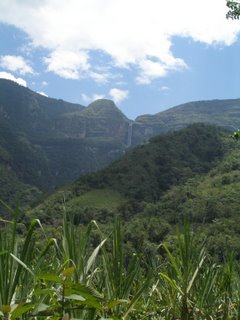
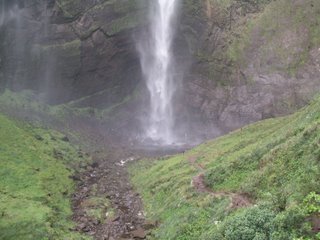
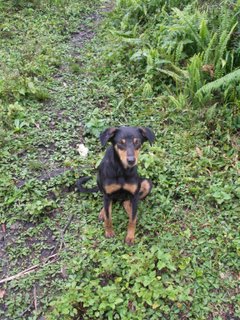
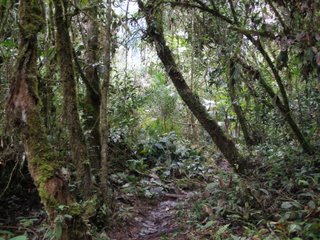
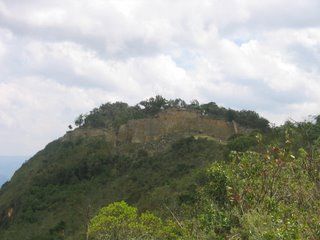



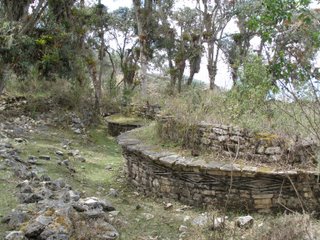




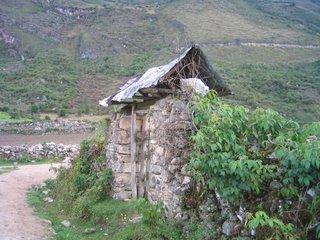












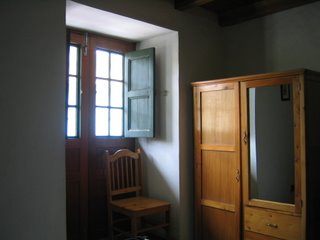
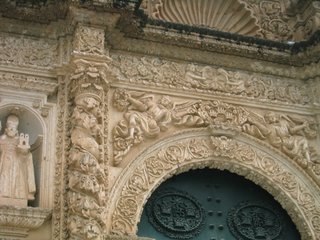

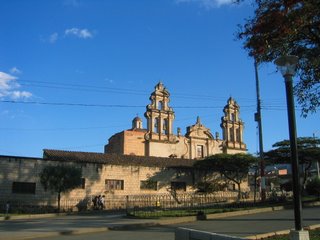
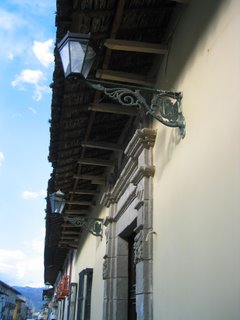

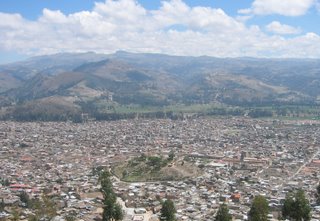 Cajamarca is a dairy center in the northern highlands, known for its fine cheeses and the local (still active) gold mine which helps to drive the city's thriving economy. Cajamarca is also a hot vacation spot for Peruvians, but we've seen very few foreign tourists here. We were here two years ago and since leaving had been looking forward to our return.
Cajamarca is a dairy center in the northern highlands, known for its fine cheeses and the local (still active) gold mine which helps to drive the city's thriving economy. Cajamarca is also a hot vacation spot for Peruvians, but we've seen very few foreign tourists here. We were here two years ago and since leaving had been looking forward to our return.




 All in all, we were saddened by the fact that the experience of Cusco had been completely muddled by tourists and the crap that surrounds the tourist trade. We did, however, find one restaurant worthy of mention: the Australian owned Los Perros wine and couch bar. The food here was excellent. We enjoyed the wontons with three dipping sauces (honey-soy, guacamole, and cheese/cream), potato skins with mint-cream sauce and guacamole, Indian curry, and an Asian style Mediterranean salad. Dinner averaged a hefty s/70 (we ate here twice).
All in all, we were saddened by the fact that the experience of Cusco had been completely muddled by tourists and the crap that surrounds the tourist trade. We did, however, find one restaurant worthy of mention: the Australian owned Los Perros wine and couch bar. The food here was excellent. We enjoyed the wontons with three dipping sauces (honey-soy, guacamole, and cheese/cream), potato skins with mint-cream sauce and guacamole, Indian curry, and an Asian style Mediterranean salad. Dinner averaged a hefty s/70 (we ate here twice).




